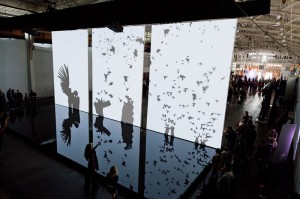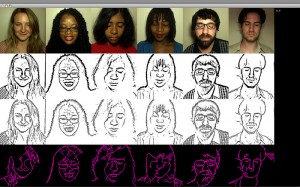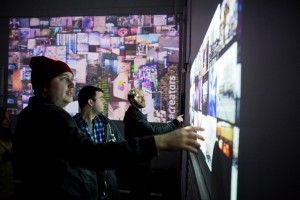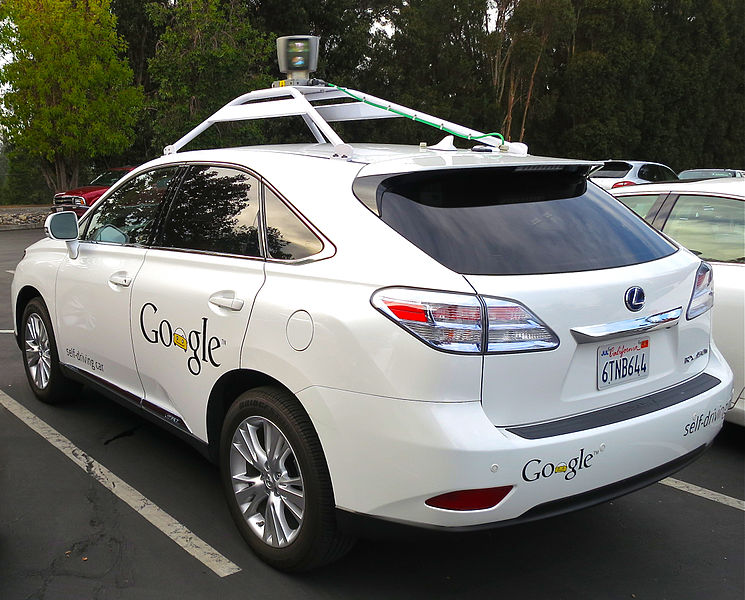Greetings, fellows. I offer as intellectual tribute the following code-based works that incorporate interactivity in various ways.
Work number one is from our very own James George along with Chris Milk and Ben Tricklebank, titled The Treachery of Sanctuary. Essentially, the work displays your shadow on one of three white monolithic screens. The work follows a bird motif – depending on the screen, your silhouette may grow wings, may be devoured by birds, or may dissipate into a flock of them. This installation is an interesting convergence of various technologies – Kinect data gleaned through OpenFrameworks is funneled into Unity. The interaction that occurs is passive – your body is simply the canvas on which the work is produced.
Link: http://jamesgeorge.org/works/treachery.html
Work two is from Kyle McDonald. This interactive piece asks for a certain amount of trust from the user. While you keep your eyes closed and hold a pen, the moving platform on which you have placed your hand moves, resulting in a self-portrait created using computer vision software. It’s a blind portrait you would never be capable of drawing, a result of probably the most direct collaboration with a machine I have ever seen.
More here: http://thecreatorsproject.com/blog/you-can-finally-be-an-artist-with-this-self-portrait-machine
In my research of figures we haven’t discussed much in class (and talking to Golan), I discovered that Intel has its own research division that delves into creative coding. `As part of a live event, Doug Carmean and his team created an interactive work in collaboration with Social Print Studio. It took a real-time stream of instagram photos taken during the event and allowed visitors to sift through them using a Kinect. Not anything particularly revolutionary, but I like the impermanence of the whole thing – it can only exist for the event, and it seems to use that to its advantage.
Link: http://thecreatorsproject.com/blog/artists-and-engineers-create-the-future-of-art-and-technology





